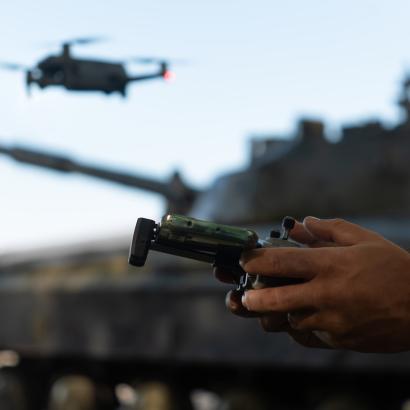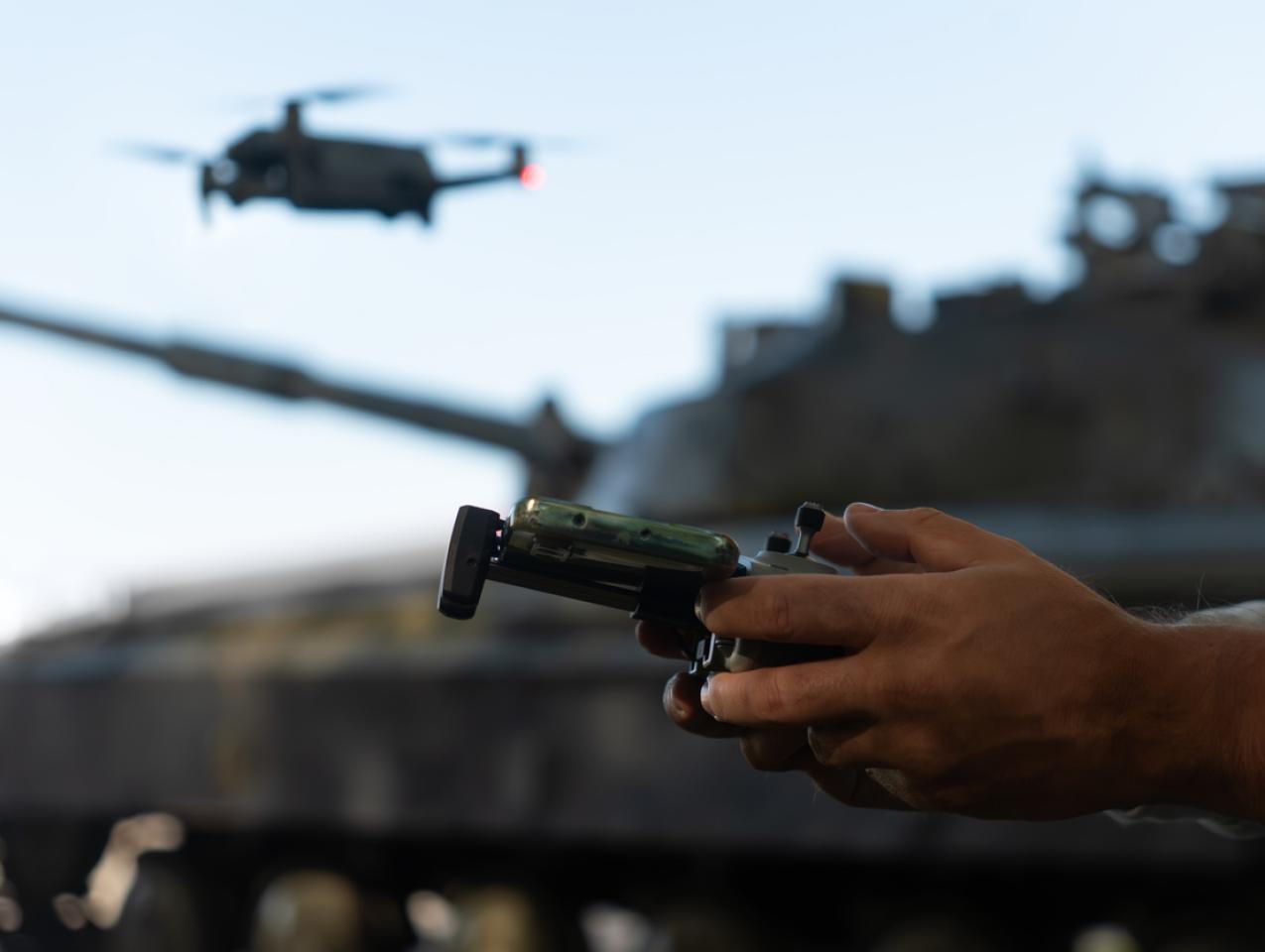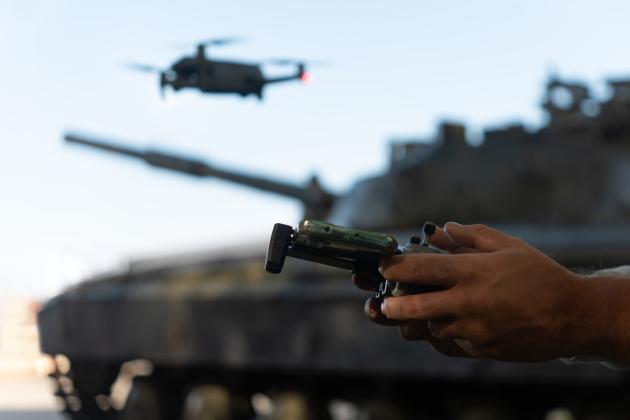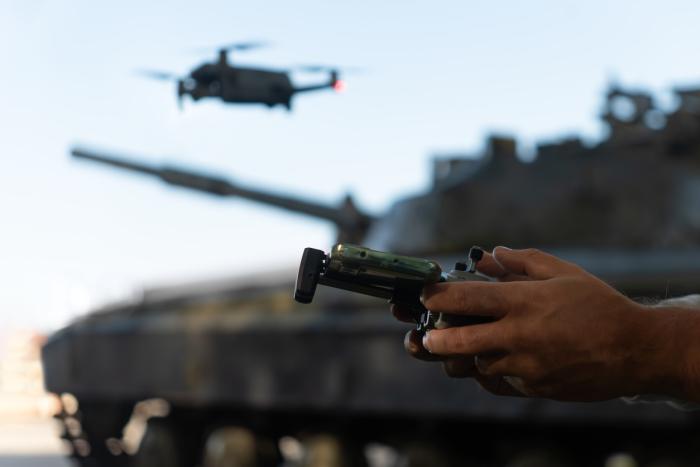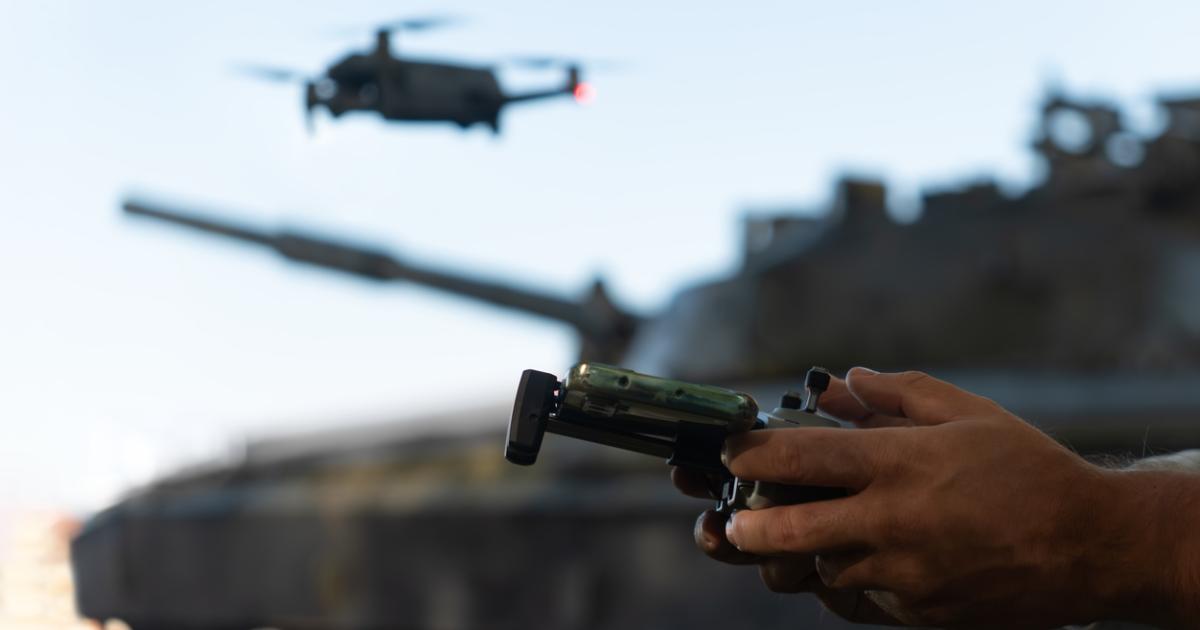- Security & Defense
- Revitalizing History
Since 9/11, the U.S. military has employed a handful of long-range drones to acquire intelligence and to strike individual high-value targets. In 2019, Janes defense intelligence group projected that 82,000 drones would be purchased worldwide over the next decade. Then came the Ukraine war. In the past two years, drone warfare has burgeoned. Both Russia and Ukraine aim to produce a million such drones in 2024. No intelligence agency anticipated this enormous growth, fueled by its low costs.
The Ukraine battlefield now buzzes with swarms of First Person View (FPV) drones. Massing artillery, vehicles, or troops are perilous for both sides, thus slowing down maneuver and preventing surprise offensives. Drones pounce on any vehicle or soldier that can be seen, inflicting widespread fear along with tens of thousands of casualties.
Ukraine garage shops are churning out 62 different kinds of FPV drones, using parts from China, the world’s leader in “toy” drones. These tiny Ukrainian drones, costing $300 to $500 each and as rudimentary as bolt-action rifles, offset Russia’s edge in volume of artillery. A Russian 152mm shell costs $600, versus $3,000 to $9,000 for a NATO shell. Consequently, Russians are firing five artillery shells for every NATO-supplied shell fired by the Ukrainians. Equally disturbing, Russia has been jamming the GPS signal guiding HIMARS or Excalibur shells costing $240,000 each. In response, Ukraine is employing drones to direct barrages of “dumb,” less costly artillery shells. Overall, Ukraine is losing over ten thousand of these attritable (suicidal) drones each month. Because, based on data from prior wars, one hundred FPV drones or artillery shells inflict three or fewer casualties, massive numbers of drones (more than a million) are needed to complement as well as substitute for artillery.
The Pentagon, however, abhors cheapness; no production line exists for cheap drones or cheap artillery shells. The Pentagon can’t produce twenty thousand, let alone a million, drones because defense industry prices are prohibitively high. Official procurement figures are classified, but press reports indicate per unit costs for FPV drones vary from $6,000 to $58,000–– twelve to one hundred times more expensive than Ukraine’s home-assembled drones. Congress, however, has not authorized Ukraine to use U.S. funds for its garage-style drone factories.
The same cost disparity affects defense just as much as offense on land. In the past five months, our dozen-odd small bases in Iraq and Syria have been attacked more than 170 times by cheap missiles and drones. To shoot them down, the U.S. Army has deployed an interceptor called Coyote that costs $100,000 per shot. In February, the Army contracted for an additional 6,700 Coyote interceptors for $670 million. It would be unsustainable for the United States to deploy forward bases and logistics depots in a major war when defense costs ten to twenty times more than offense.
At sea, the Biden administration, fearful of Putin’s response, has refused to give Ukraine anti-ship missiles. NATO and U.S. warships pulled out of the Black Sea before the war began two years ago, permitting the Russian navy to blockade Ukraine’s grain exports. So Ukraine rigged its own airborne and seaborne drones that sank seven Russian warships, forcing the Black Sea Fleet to retreat and grain exports to resume. In February, a Russian landing ship was sunk, to quote a U.S. Marine general, by “$60,000 worth of jet skis.”
In the Red Sea, it is embarrassing that the U.S. Navy must deploy a multi-billion-dollar carrier task force to semi-contain a tribe of pirates, rather than snuff out the threat. In January and February, U.S. Navy missiles intercepted more than 70 drones fired at vessels in the Red Sea by the Houthi tribe in Yemen. Drone costs to Iran (Houthi’s supplier): $2 million. Costs of the U.S. Navy’s SM-2 missiles fired: $140 million. This is an exorbitant cost to defend vessels against inexpensive drones. We don’t have the magazines or production lines for a full-on fight against China at such cost-exchange ratios.
Ukraine is producing one million drones; imagine how many China will produce. The U.S. Navy is also experimenting with offensive drones, including surface and submersible variants, to sink Chinese ships. One option envisions launching a swarm of 30 Coyotes, priced at $15,000 per unit. Each “swarm” costs $450,000. The Navy won’t do much swarming at that price tag.
Deputy Secretary of Defense Kathleen Hicks announced a program to produce thousands of “small, smart, cheap” drones to counter China. All details are classified, even though thousands may eventually be deployed. The per unit cost will range from the tens of thousands to the hundreds of thousands of dollars. Only in the Pentagon are per unit costs of “hundreds of thousands of dollars” labelled as “cheap.”
The Deputy Secretary said attritable offensive drones and their cyber/electronic systems will make up half a percent of the Pentagon budget, or about four billion dollars. Half a percent is a public relations gesture, not a serious effort. Judged by the budget rather than the rhetoric, the Pentagon believes offensive drones are a small niche in warfare. No trade-offs with large, expensive mainstay items like aircraft carriers are proposed. The result a few years hence will be twenty or thirty thousand offensive drones with high per unit costs.
Hopefully, the drones will benefit from AI. But to control the development of AI-enhanced weapons, the Pentagon has issued a 21-page bewildering directive that, inter alia, “recognizes privacy and civil liberties…and will establish transparent governance and compliance.” This DOD “compliance” will force AI software to include ideological emendations. How can a drone recognize civil liberties?
Culture eats strategy and paper plans for lunch. And the culture of the American military-industrial complex is fixed upon opulence that is not affordable. The ballooning national debt guarantees there will be no increase in the inadequate defense budget. Our defenses to counter drones cost ten times more than what our enemies are investing in offensive drones. The net result is that drones will reduce U.S. military capabilities because the Pentagon’s budget cannot sustain its expensive tastes.








